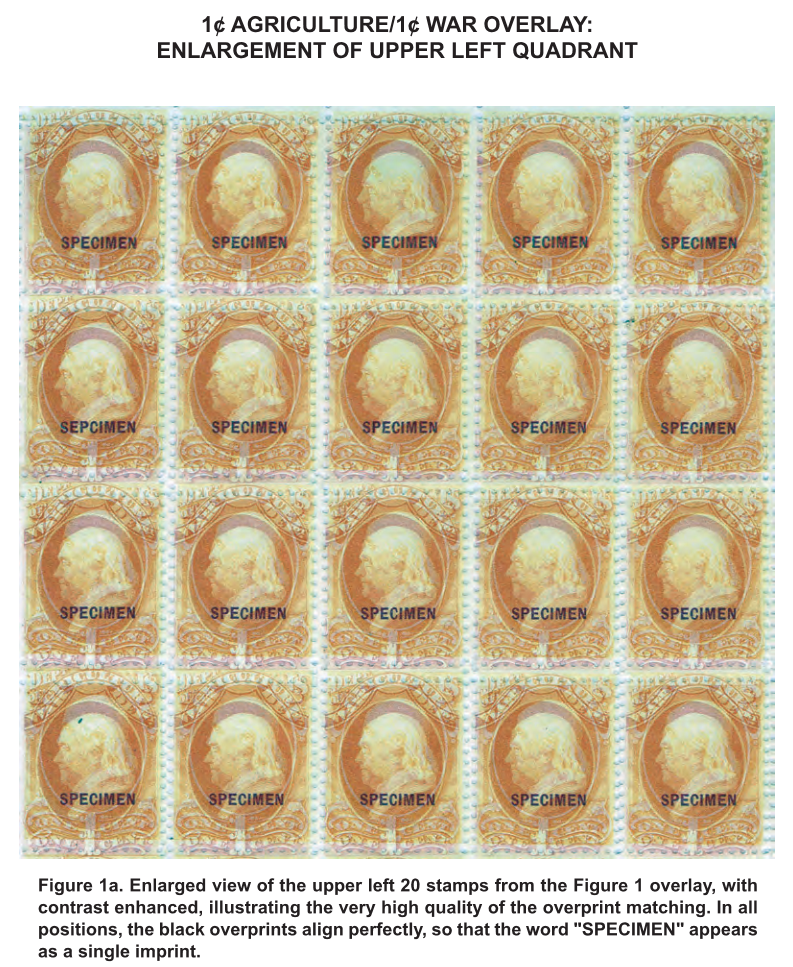Battleship Revenue Stamps
Publications
This page contains brief descriptions and links to philatelic publications by the BDR lead author and collaborators. These subjects include revenue stamp topics and analytical philately.
New Online Directory of Cancels for the Proprietary Revenues of 1898A 2024 article explaining the data sources and references, organization, and uses of the online BDR. Several examples illustrate searching techniques for quickly locating cancels of interest. The article also shows examples of the types of product information and news headlines contained in BDR for the different proprietors and manufacturers.
The link to this article is Colin Blakebrough, Malcolm Goldstein, Timothy Kohler, Paul Reese, Frank Sente, and Robert Mustacich, New Online Directory of Cancels for the Proprietary Revenues of 1898, The American Revenuer, Second Quarter 2024 (Vol. 77, No. 2) pp. 20-27.
An example search from the article for the printed cancel “T.F.C.” returns three different printed cancels used by The Fenaline Co.

Examples of product images contained in the more than 6,250 links. The Initials-# below each image identifies the specific row in the BDR tables with the link to an information file containing this image.

Companies and proprietors often were the subject of news articles. These are examples of some of the sensational headlines contained in the more than 6,250 links. There are many informational and financial articles in these links.

Regional Use of Battleship Cancels
This article describes the discovery that a limited, regional use was typical of many cancels on battleships. This is considered the result of the local and regional reach of business conducted between the purchasers and makers of custom stamping devices at this time. David Thompson's find of an advertising postcard specific to a cancel triggered the search for this cancel. The study of these cancels led to the realization that the known uses were all regional to the manufacturer. This cancel was the "Flag Cancel" produced by the Wallace Supply Co. of Chicago, and known uses of this cancel are shown below

The locations of the known uses of the Wallace Supply Co.'s patriotic cancel are all in the Midwest centered about Chicago. Numerals indicate multiple uses at a location.

For more information, see Robert Mustacich, Paul Reese, Frank Sente, and David Thompson. 2023. Regional Hand-Stamped Cancels on 1898 Battleship Revenue Stamps The American Revenuer, 76(1):18-26.
Cancel ExtractionResearch in the use of color analysis for cancel viewing includes the "Cancel Extractor," a program which uses a reduced resolution analysis of an image to remove selected color groupings from the image. It is very simple to operate -- just select ares of colors on the image to be removed and experiment with these selection to obtain the best results. Any results of interest can be saved. While this program can work to advantage in certain stamp images, it is "subtractive" in the sense of some loss in information content relative to programs employing filters at higher resolution. We recommend that the ImageSleuth program be considered for general purpose cancel analysis. It runs locally on the host computer, and it appears to be a good replacement for the retroReveal software which is no longer available. The technical operation of the cancel extractor is explained in:
Mustacich, R. 2016. Seeing Only the Cancel. The American Revenuer, 69(3): 79-82.

Perforation Analysis
Using inexpensive digital scanners, it is possible to measure perforation features such as hole sizes and hole spacings to micron-range accuracy. This capability makes the fingerprinting of perforations possible owing to the consistent repetition of microscopic spacing discrepancies in perforation hole spacing resulting from imperfections in perforating equipment. This research is presented in the following publications:
Mustacich, R. 2014. Freak or Fake? A New Fingerprinting Method for Distinguishing between Original and Fraudulent Extra Perforations of 19th Century Revenue Stamps. The American Revenuer, 67(1): 2-19.
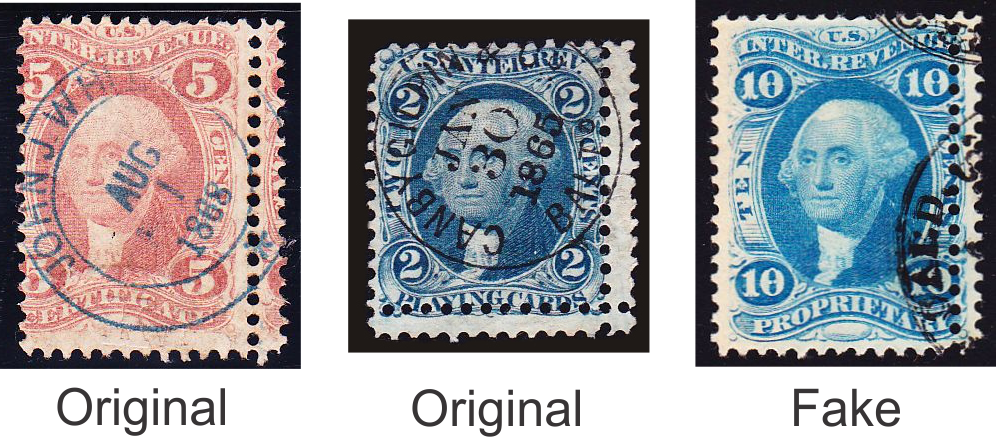
Mustacich, R. 2015. Fake Perforations on 19th Century U.S. Revenue Stamps: A Stroke of Luck. The American Revenuer, 68(4): 90-96.

Mustacich, Robert V. 2016. Measurements of Stamp Separation Features by Digital Image Analysis. Proceedings of the Second International Symposium on Analytical Methods in Philately, Itasca, IL, November 2015, John H. Barwis and Thomas Lera, eds., Wilcox Printing and Publishing, Inc., Madrid, IA, pp. 73-85.
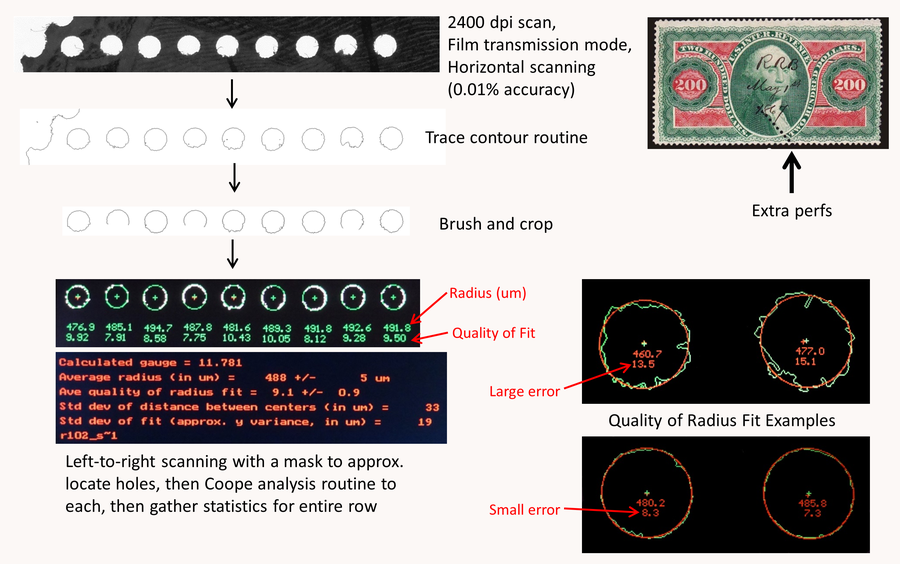
Mustacich, Robert V. and Lin Yangchen 2018. Perforation Quality and Small-Hole Characteristics in the Malaya Small Heads Issue. The Malayan Philatelist 59(2):42-45.
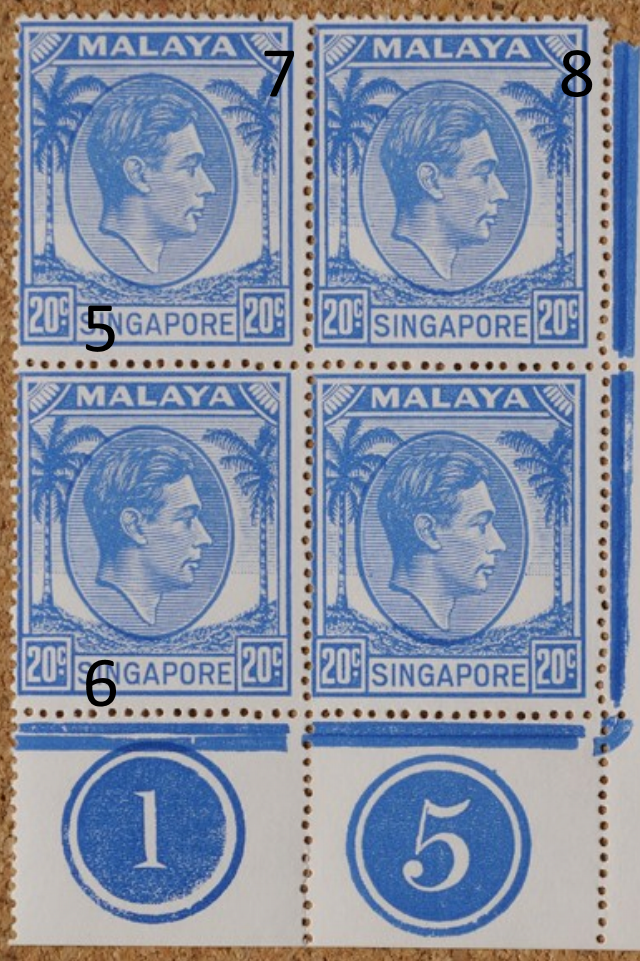
Die Cut Separation Analysis
Using a digital scanner to take images of die cut stamp edges, the serpentine shapes can be characterized in terms of their gauge, depth, and shape. The manufacture of of die cut edges is shown to converge over time to groups of common designs. This research is presented in the following publications:
Mustacich, R. 2020. The Computer Analysis of Die Cut Separations of U.S. Stamps. Proceedings of the Fourth International Symposium on Analytical Methods in Philately, Washington, D.C., Thomas Lera, John Barwis, editors, November 13-14, 2020, pp. 47-58.

Digital Image Differencing
The direct digital differencing of high resolution images can be used to directly compare entire images of stamps for microscopic differences arising from plate variations and printing flaws as well as large differences originating from cancels or from the stamps themselves. The possibility of doing this was initially considered unlikely because of expected variability in optical scanning, paper shrinkage differences between stamps, color differences, digital noise, interpolation losses, imperfect image alignments, etc. A combination of scanning protocols and computational methods were found which can limit and correct for these variations to provide direct digital subtractions of one image from another. These approaches can be taken much further to compare the relative distortion differences between the individual plate impressions on a printing plate! This research is described in the following articles:
Mustacich, Robert V. 2016. Digital Image Differencing of High Resolution Stamp Images. Proceedings of the Second International Symposium on Analytical Methods in Philately, Itasca, IL, November 2015, John H. Barwis and Thomas Lera, eds., Wilcox Printing and Publishing, Inc., Madrid, IA, pp. 57-72.
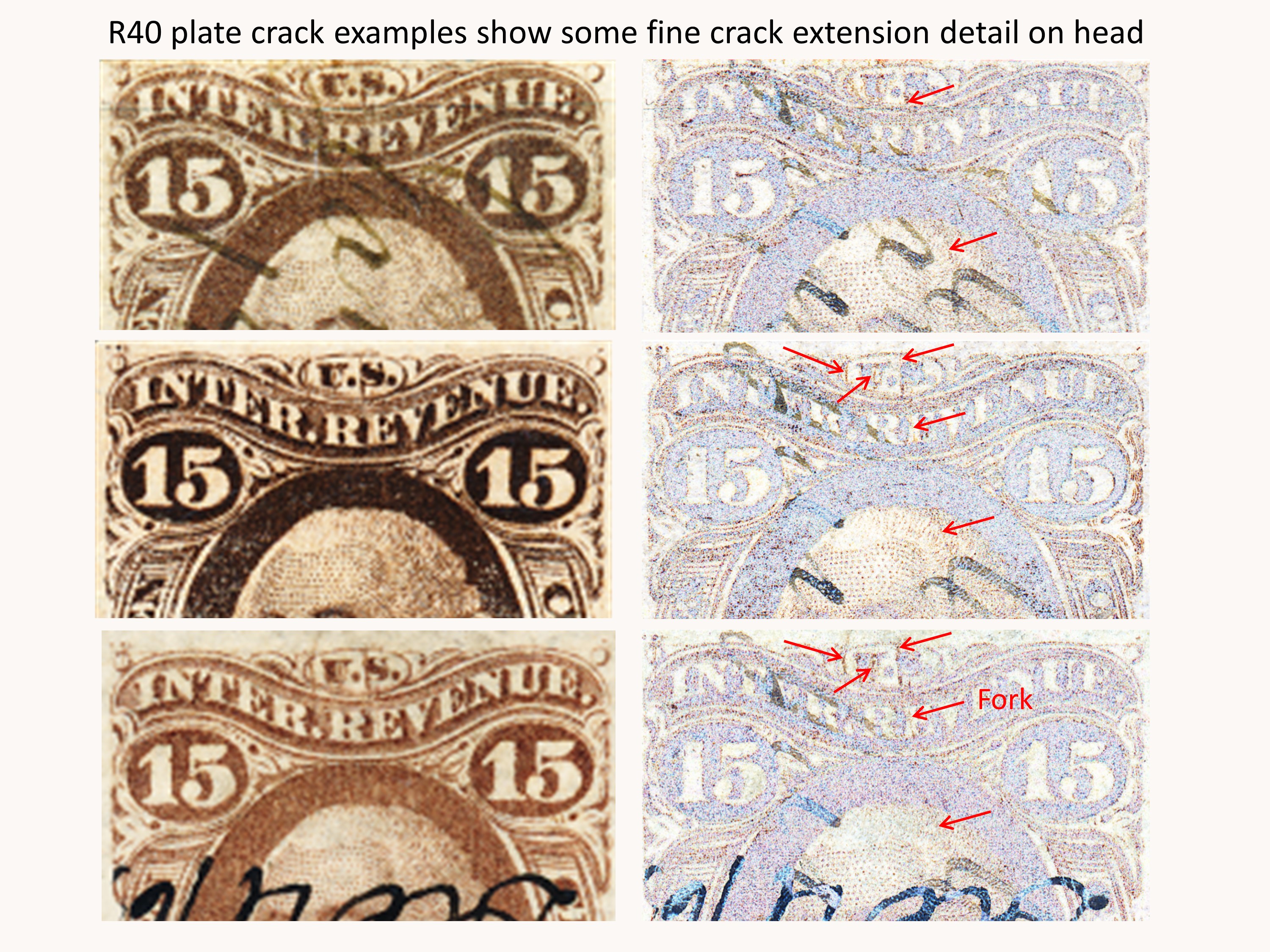
This research describes advances to the approach of digital image differences which allows the visualization of the relative distortion patterns between the individual(rocked-in) transfers and how these vary from plate to plate. The new methods automatically correct for post-printing paper shrinkage which creates small and varying distortions from one stamp to another. An example application shows the analysis of distortions in the plates to group a set of battleship revenues with double transfers to plates in common.
Mustacich, Robert V. 2020. A Versatile Comparison of Stamps by High Resolution Image Differencing. Proceedings of the Third International Symposium on Analytical Methods in Philately, London, October 2017, Smith,S. and Barwis,J.H., eds., Wilcox Printing and Publishing, Inc., Madrid, IA, pp. 63-75.
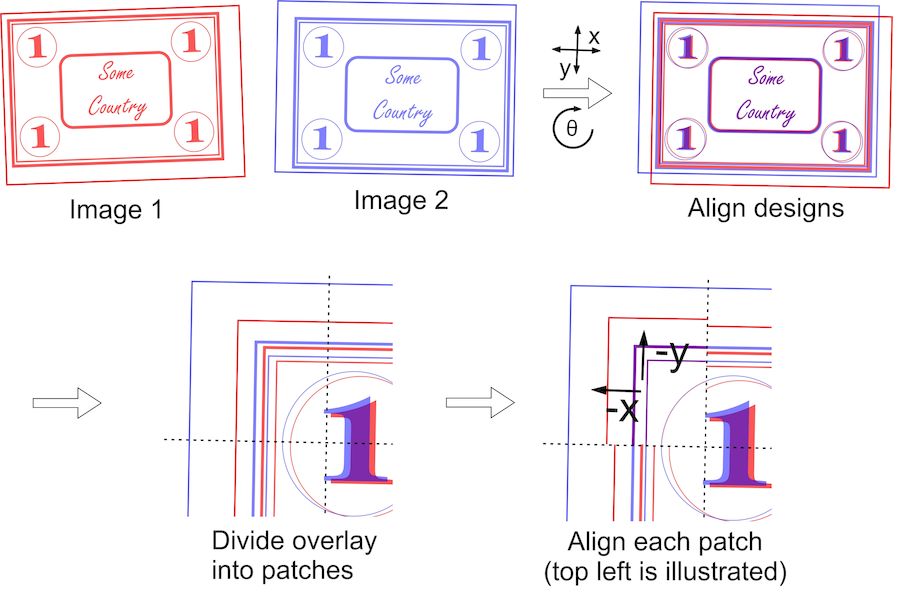
Digital Transparency Overlay Analysis
Digital transparancies of overprinted multiples were used in software to find matching alignments of overprints of the Departmental Special Printings.
Mooz, William E., and Mustacich, Robert V. 2020. Departmental Special Printings: More Than One Overprint Plate. The Chronicle 72(3):283-290.
